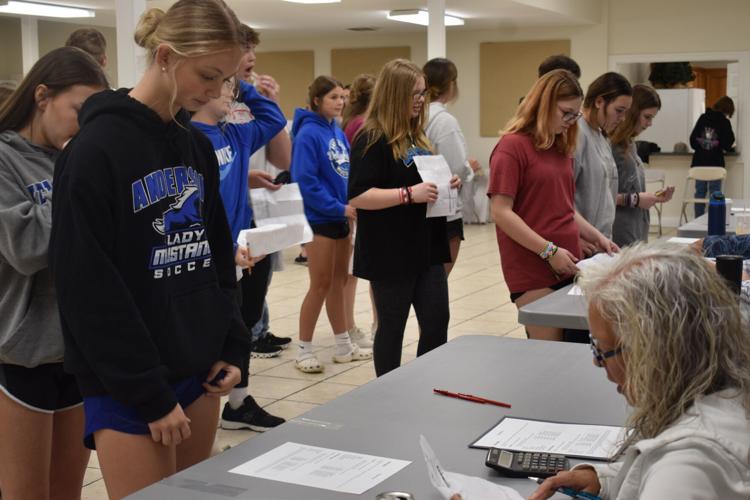Eighth grade students from Anderson County Middle School were given a reality check of life as adults on April 19 when they participated in a “Reality Store” to teach them about the importance of money management.
Anderson County Extension Agent of 4-H Youth Development Susan Campbell and Anderson Middle School Family Resource Youth Service Center Beckey Johnson collaborated for another year to expose students to the “It’s Your Reality” program.
This program allows students to be shown the reality that comes with adulthood including finding a career path and living off a salary.
It makes students think about the many expenses that come with adulthood including groceries, clothes, housing, insurance, and many other responsibilities and see how they relate to their career.
Students described this process as a ‘game of life’ representing real life scenarios they might deal with in life as adults.
Prior to entering the Community Room, the eighth graders were given their career’s income after taxes calculated and based on their math assessment scores from the beginning of the year.
Johnson stated the students were made aware prior to testing that their math scores would be factored into this program, and that if they worked hard, it would pay off.
This program has been implemented for ACMS eighth grade classes for the past several years however this year it is the first in which assessment scores were factored in. Johnson added
Students quickly saw how their work would pay off at the “Reality Store” when they were given a transaction sheet and had to visit each booth set up representing a costly need or want in life. In doing so, they had to manage their money wisely.
As part of the experience, students had to stop by each of the many booths set up around the room, trying to afford things without having to stop at the supplemental income booth to get a second job to afford their monthly expenses.
The booths students visited included housing, where students had to decide to rent or buy and choose a size for their housing based upon family size. They also had to consider transportation by choosing a car that would best fit within their needs and were then given a monthly payment plan.
Additionally, eighth graders had stops for various insurance plans including dental and vision. Booths were also set up for groceries, utilities and internet, cell phone plans, and clothing; all of which had options to spend more or less money.
A bank was also set up at the front center of the room that was open for students to visit at any time for financial advice. There was a community booth that allowed students to make charitable donations and give back to the community if they could.
After finishing the students who ended the month with money left over could choose between a Take 5 candy bar, Payday, Nerds Rope, or Spree. Those who ended with negative funds could choose between a Zero bar, LaffyTaffy, or a Butterfinger bar.
The program ultimately allowed students to see only some of the many financial responsibility’s adults have in life and the decisions they must make to cover monthly costs.
When the groups of students finished the program Johnson reminded them to thank their parents and grandparents for all the things, they do for them that go unnoticed, some of which they are now aware of.



















